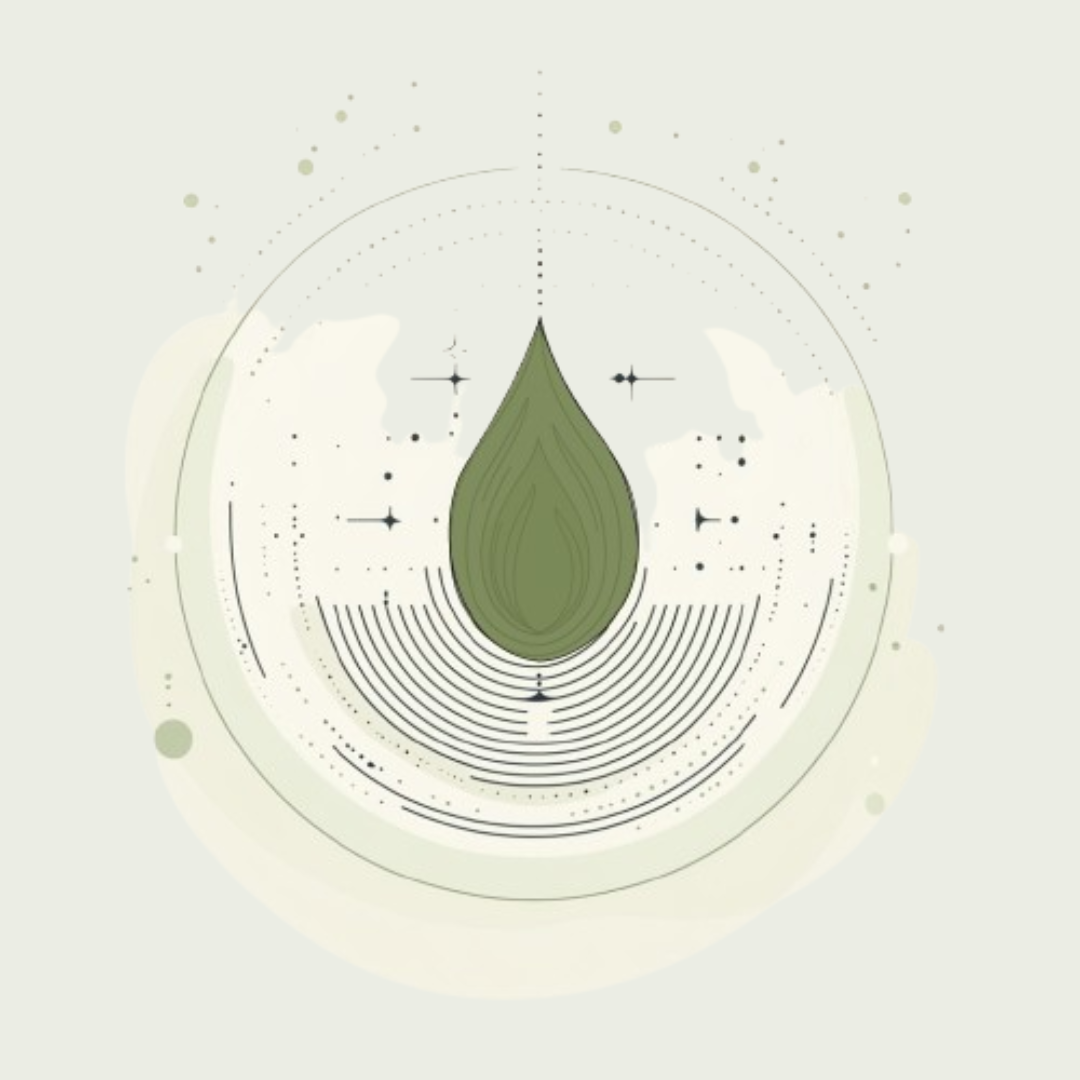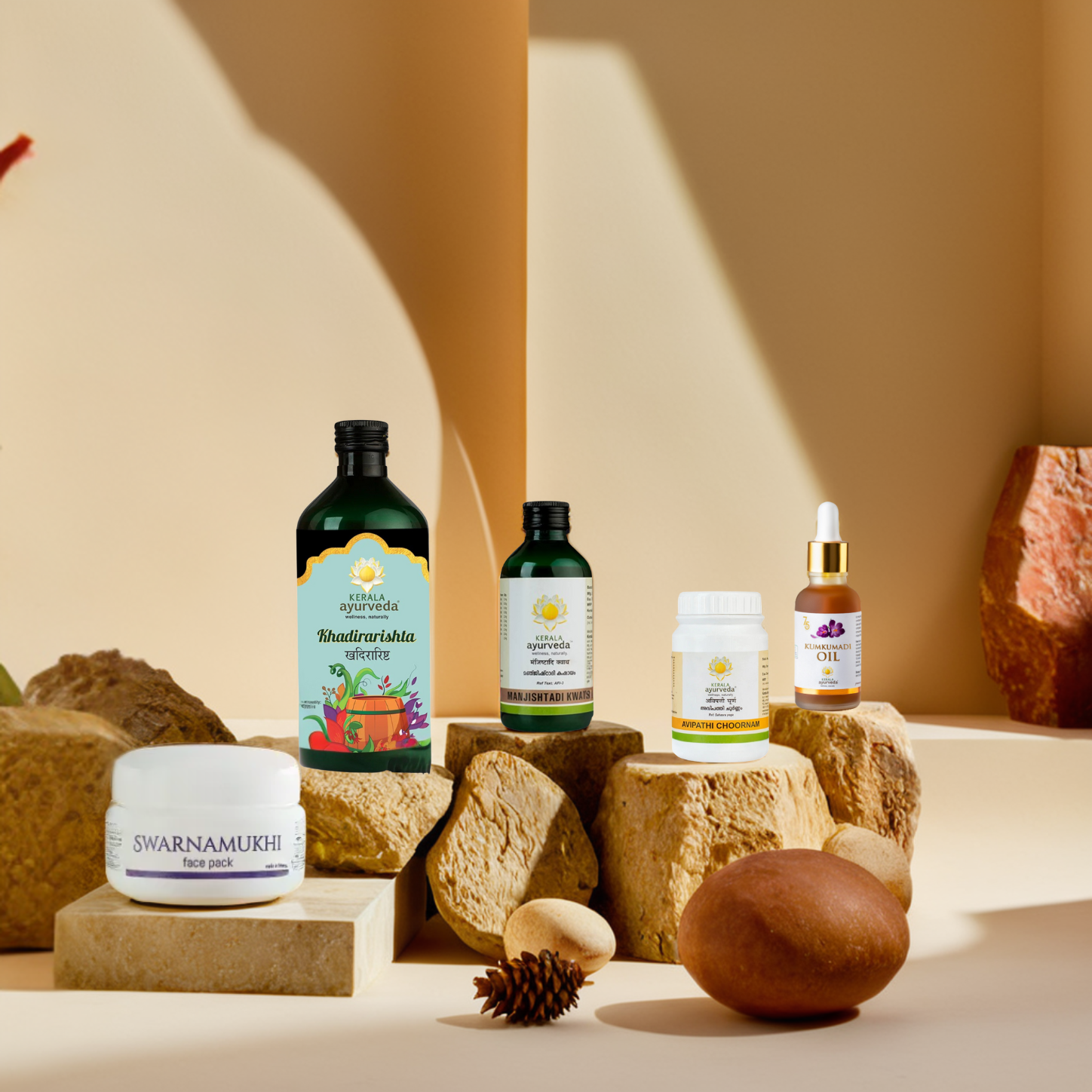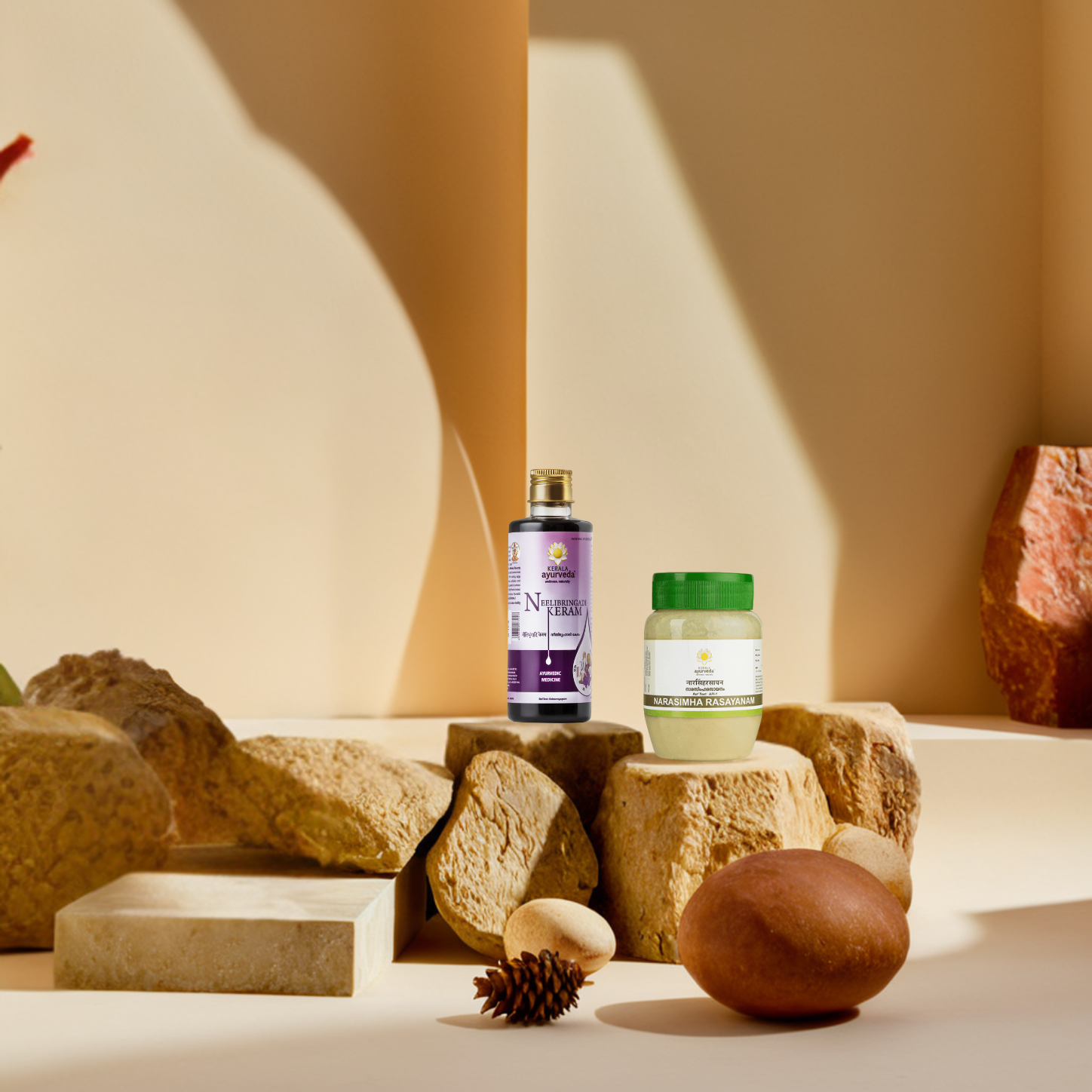If you’ve ever heard about Ayurvedic remedies, you might have come across medicated ghee, a traditional Ayurvedic preparation made from cow’s milk and therapeutic herbs. It’s not just any ordinary ghee; it’s packed with health benefits ranging from various medical therapies to treating both physical and mental health issues.
In Ayurveda, ghee has a special property called Samskarasya Anuvartanat. This means that ghee can absorb the properties of herbs added to it without losing its natural qualities.
The Vedas even call ghee, or ghritham, the body’s most important fuel. Back in the day, it was made from the milk of grass-fed cows that roamed freely in clean, unpolluted areas. Ayurveda holds ghee in such high regard, considering it a must-have food for promoting overall health and well-being.
In this blog, we will take a closer look at the various benefits and types of Ayurvedic ghee and understand how this ancient ingredient can support your body in so many ways.
Nutritional Facts About Ghee
Ghee has multiple nutritional values.
- Carbs: Ghee has no carbs; it’s almost entirely fat.
- Fats: Ghee is pure fat, similar to other cooking oils. One tablespoon of ghee contains 15 grams of fat, 9 grams of which are saturated fat. It also has less than one gram of polyunsaturated fat and around 5 grams of healthy monounsaturated fat.
- Proteins: If the milk solids aren’t entirely removed during the clarifying process, ghee may still contain traces of protein.
- Vitamins and Minerals: Ghee’s micronutrient content depends on the brand and the cows' diet. On average, a teaspoon of ghee provides about:
- 8% of the RDI for vitamin A
- 2% of the RDI for vitamin E
- 1% of the RDI for vitamin K
Since ghee is concentrated fat, it's best to use it in moderation as part of your meals. The nutrients in ghee, especially the fat-soluble ones, are best absorbed when used with foods that already contain fat.
Types of Ghee in Ayurveda
Ghee in Ayurveda is classified into different types based on its origin and the herbs used to enhance its benefits. Let's explore these varieties:
1. Grass-fed vs. Grain-fed Ghee
Ghee comes from both grass-fed and grain-fed cows. The difference? Grass-fed ghee is much more nutritious. Cows that graze on lush pastures produce richer milk, and ghee made from this milk has higher nutrient content. On the other hand, grain-fed ghee may contain traces of steroids and antibiotics due to the cows’ feed.
Dairy research consistently supports that grass-fed ghee is healthier, so it’s always a good idea to opt for this version. In grass-fed dairy farming, cows roam freely and are often given herbal remedies to boost milk production, making this ghee a much better option for your health.
2. Garlic Grass-fed Ghee
One of the most potent types is garlic grass-fed ghee, which combines the healing power of garlic with the nourishing qualities of ghee. Garlic has natural antimicrobial and anti-inflammatory properties, making this ghee an excellent choice for boosting immunity and overall health. It’s also a great cooking oil, and yes, it’s Keto-friendly!
3. Grass-Fed Cultured Organic Ghee
For those seeking the purest form, grass-fed cultured organic ghee is a fantastic option. This ghee is not only derived from grass-fed cows but also cultured to enhance its flavor. If you’re lactose intolerant, this type is safe to consume as it contains lactic acid, which helps break down the milk solids. It also has a high smoke point, making it perfect for high-heat cooking like sautéing, baking, and deep frying.
4. A2 Organic Ghee
A2 ghee comes from cows that produce A2 protein in their milk. This protein is easier to digest than the A1 protein found in most dairy. A2 ghee is a great option for people looking for purity, as it’s free from antibiotics, GMOs, and steroids. It’s also entirely natural, with no artificial flavors, colors, or preservatives, making it a healthy addition to your diet.
5. Lime Grass-fed Ghee
If you’re into tangy flavors, lime grass-fed ghee might just be what you need. Combining the fresh zest of lime with the creamy goodness of ghee, this type is perfect for adding flavor to your dishes. You can use it in cooking or even spread it on sandwiches to enjoy a unique, flavorful twist.
Various Treatments Using Ayurvedic Ghee
One of the standout features of Ayurveda is the use of oily substances like ghee for both internal and external healing. Ayurvedic ghee is a versatile ingredient used in skincare treatments. Due to its oily nature, ghee helps balance the Vata dosha, which is associated with dryness and roughness.
For instance, ghee massages are often recommended to treat conditions like osteoarthritis, paralysis, and even sleeplessness. As part of Panchakarma therapy, ghee is used to flush out toxins from the body and improve overall health. Patients receive increasing doses of ghee each morning, followed by massages to remove toxins from fatty tissues, and steam therapy to cleanse the skin’s surface.
Here are a few other ways Ayurvedic ghee can work wonders:
- Gargling with ghee helps keep teeth and gums healthy.
- Ghee can be used as a holistic bath oil when mixed with essential oils like lavender or lemon.
- It’s incredibly effective as a treatment for heat burns.
- For tired eyes, ghee can help soothe and moisturize.
- It’s also an affordable and natural moisturizer for dry skin.
- A few drops of ghee in each nostril can stop nosebleeds, and it can also help ease headaches when used regularly.
Ghee does wonders for your body, but it also works magic for your mind and helps you feel your best inside and out. Let's take a look at the deeper benefits it brings to your mind and overall well-being.
Benefits of Using Ayurvedic Ghee
Ayurvedic ghee is more than just a cooking ingredient; it’s a natural boost for your body and mind. Packed with healing herbs and pure nutrients, it supports everything from brain health to digestion, helps calm your nerves, and strengthens your immune system. Here are some of the amazing benefits of using it:
1. Enhanced Brain Function with Brahmi Ghee
One of the most popular types of Ayurvedic ghee is Brahmi ghee, which is made by infusing Brahmi herb into ghee. Brahmi is known for improving memory, cognition, and mental clarity. It’s traditionally used to stimulate the central nervous system and promote brain health.
2. Calms the Doshas with Panchatikta Ghrita
Panchatikta ghrita, made from five healing herbs, is a traditional ghee known for balancing Vata, Pitta, and Kapha, and purifying the blood. It’s deep-penetrating and helps relieve inflammation, toxin buildup, and skin issues.
3. Reduces Stress and Anxiety with Ashwagandha Ghee
Ashwagandha, combined with ghee, is a powerful remedy for reducing stress and anxiety. It has calming effects on the nervous system, helping improve skin and hair health. Additionally, Ashwagandha is great for boosting testosterone levels and improving overall vitality.
4. Supports Respiratory Wellness with Vasa Ghee
Vasa ghee, made with the Malabar nut, is a potent remedy for respiratory issues like bronchitis, asthma, and excessive mucus. It helps ease sore throats, colds, and coughs, making it an excellent option for anyone with a cold or respiratory condition.
Ayurvedic Ghee vs. Butter
While ghee and butter are similar in their nutrient profiles, ghee stands out as the preferred choice in Ayurveda. Unlike butter, ghee contains minimal dairy proteins, making it easier to digest, especially for those with dairy sensitivities. It’s also free of the milk solids found in butter, which makes it a more beneficial option for your body.
Our List of Recommended Ghrithams
At Kerala Ayurveda, we offer a range of Ayurvedic ghee-based products that stand out for their effectiveness in supporting various health benefits. Here are some of our top recommendations:
- Brahmi Ghritham: A brain-boosting tonic for improving memory, focus, and mental health.
- Mahathikthaka Ghritham: Known for its ability to treat skin issues like eczema, rashes, and boils.
- Jathyadi Ghritham: A soothing ointment for treating wounds and cracked skin.
- Indukanta Ghritam: A powerful immune booster and remedy for chronic fevers and digestive issues.
- Sukumara Ghritham: Great for addressing female reproductive health and easing menstrual pain.
Conclusion
Ayurvedic ghee isn’t just an ingredient for your kitchen or skincare routine; it’s a therapeutic powerhouse that’s been used for centuries. Whether you use it for digestion, brain function, or skin care, ghee offers a wide array of benefits. Its ability to balance the doshas and promote overall health makes it an essential part of Ayurvedic practices.
With the recommended ghee-based products from Kerala Ayurveda, you can experience the holistic healing power of ghee in your daily life.
FAQs
1. What is the medicinal use of ghee?
Ghee is highly regarded for its medicinal properties in Ayurveda. It is anti-inflammatory, rich in vitamins like A, K2, and E, and Omega-3 fatty acids. Ghee is also a source of butyric acid, a short-chain fatty acid that supports gut health. It aids in cleansing and detoxification at both a physical and mental level, promoting overall well-being.
2. Is it good to eat ghee daily?
Yes, ghee can be beneficial when consumed daily. Ayurveda considers ghee a nourishing food that supports digestion, enhances mental clarity, and provides essential fatty acids.
3. How should I consume ghee daily?
To consume ghee daily, start with half a teaspoon in the morning or as a part of your breakfast. Consider taking a warm beverage after ghee consumption to support better digestion.





